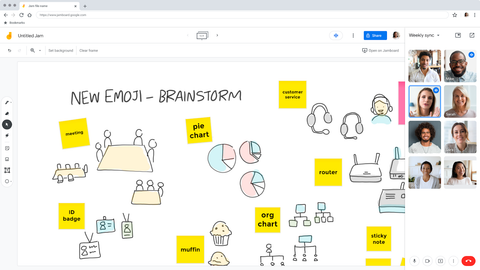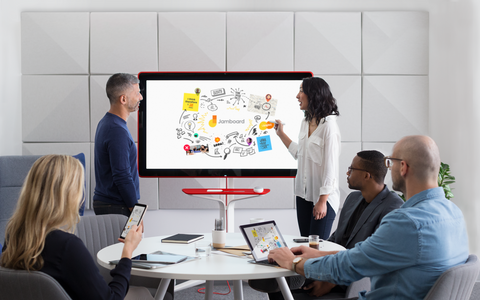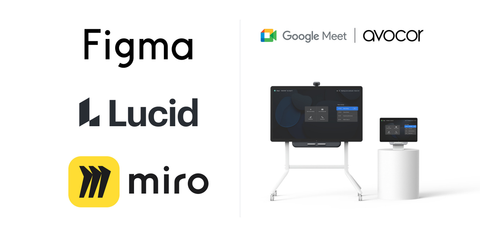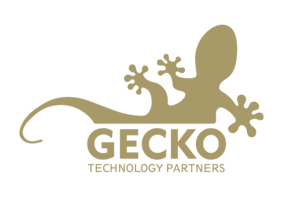We’re breaking down everything to expect on the Jamboard app, Jamboard device and current whiteboard-enabled Google Meet Hardware – Google Meet Series One Board 65 and Desk 27 – as we approach the final day of Google support on 30th September 2024.
This post touches on:
Jamboard App

As of 1st October 2024, the Jamboard app on both web and mobile will shift to view-only mode. This means that you won’t be able to create new Jam files or edit existing ones on any platform. You have until 31st December 2024 to export all of your existing Jams, after which the Jamboard app will be sunset. Fortunately, there are a few different ways to export your Jams to ensure you don’t lose any of the work that's been created within your organisation:
Export Jam files as a PDF or PNG
The simplest way of saving your existing Jams is by exporting them as a PDF or PNG. This can be done either from Google Drive or in the Jamboard app on web and mobile. You can then migrate your Jamboard PDFs into other tools if you wish, however, it is worth noting that they can’t later be edited as a whiteboard this way.
Google has also shared plans to automatically convert any remaining files to PDFs before the end of 2024. Files will be saved in your Google Drive in the same location that they were originally stored, making it easy for you to find them when needed and ensuring access to important files is retained.
Importation tools from third-party whiteboarding platforms
In order to retain whiteboarding functionality in your files, FigJam, Lucidspark and Miro have launched importation tools for transferring existing Jams from Jamboard into their applications. This means you can pick up right where you left off in Jamboard and continue to edit your existing work in a new application without any interruptions. This will let you take advantage of their extensive ranges of collaborative whiteboard tools, including many features that were never available in Jamboard.
Jamboard Device

The Jamboard device will also reach the end of its support from Google on the same date, 30th September, before which time the devices will receive an update to enable unlicensed mode. This mode allows you to continue using your Jamboard after its Auto-Update Expiration (AUE) date for local, offline whiteboarding on the Jamboard app or as a touch-enabled* external screen for content sharing via HDMI.
*Touch is supported on Windows and ChromeOS only and not on macOS.
However, it is important to note that, beyond the AUE date, you won’t be able to open or save any existing Jams or participate in Google Meet calls from the device. Additionally, some whiteboarding features which require an internet connection – like the AI drawing tool – will not be available. Jamboard device management will also be removed from the Google Admin panel on 1st October 2024.
In terms of licensing, all Jamboard licences can be renewed until September 2024 at a prorated cost so that you can continue making the most of the device and receive updates enabling unlicensed mode.
Google Meet Series One Board 65 and Desk 27

The Google Meet Series One Board 65 and Desk 27, which currently use the Jamboard experience to power their whiteboarding capabilities, have gained support from three third-party applications: FigJam, Lucidspark and Miro.
These whiteboarding applications are integrated into the devices as alternatives to the Jamboard app, providing you with more options for how you collaborate with your team – both inside and outside of meetings – using the Board 65 and Desk 27.
FigJam, Lucidspark and Miro offer a wide set of tools and features that were never present in Jamboard to help you bring your ideas to life, including infinite canvases, voting, templates and comments. You can leverage all of these interactive features and more from your meeting room device.
If your team is already using FigJam, Lucidspark or Miro on web and mobile, or has plans to do so, the integration with Google Meet Hardware offers a more consistent experience, allowing you to use the same application across different devices for visual collaboration. You can already use the whiteboarding tools directly inside a Google Meet call on the web, as well as with other Google Workspace products such as Google Calendar, Drive, Docs, Sheets and Slides.
Lucidspark was the first to bring its integration to the Board 65 and Desk 27 in January, followed shortly by Miro in March and FigJam in April. This means you can use your device to collaborate on a whiteboard from any of these platforms right away. FigJam, Lucidspark and Miro all work inside and outside of meetings, letting you launch a whiteboarding session either during a Google Meet call via the “Activities” tab or by pressing the “Start a whiteboard” button on the meeting room device’s home screen.
More information about how to use the third-party whiteboarding applications from within a Google Meet call on Board 65 and Desk 27 can be found here.
Next Steps
If you have any questions about how these upcoming changes will affect you, or if you’re a Board 65 or Desk 27 user and don’t currently have an alternative whiteboarding solution in place prior to Jamboard’s AUE, get in touch with us at info@GeckoTech.cloud. We’re happy to provide support and discuss the options available to ensure a seamless transition across your organisation and meeting spaces.
We will share additional information as updates occur, including the rollout of Miro's importation tool. Subscribe to the Gecko newsletter and follow us on LinkedIn to stay up-to-date with the latest announcements. 🦎
Note, this blog post has been updated to reflect the latest information:
- 2nd April 2024: launch of Miro integration on Google Meet Series One Board 65 and Desk 27
- 17th April 2024: launch of FigJam integration on Google Meet Series One Board 65 and Desk 27
- 1st May 2024: Lucidspark integration is now available outside of meetings on Google Meet Series One Board 65 and Desk 27
- 10th July 2024: launch of Gecko limited-time promotion on Google Meet Series One Board 65 and Desk 27
- 17th September 2024: included the launch of the Miro importation tool which is available to users with paid Miro licences
